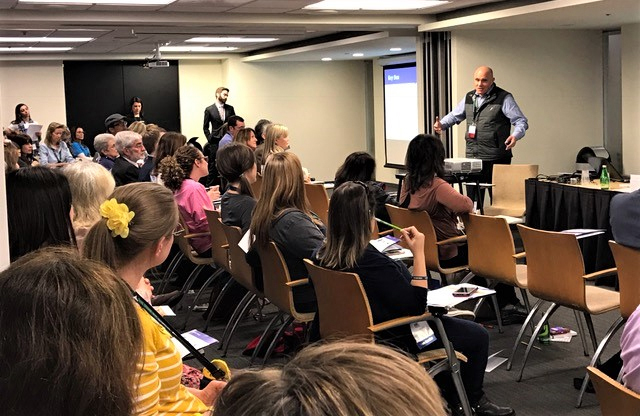This week, hundreds of powerful and passionate rare disease advocates shared their personal stories with their representatives in Washington, DC. On Rare Disease Day, in his first address to a joint session of Congress, President Donald Trump highlighted the need for treatment advances and celebrated Megan Crowley, a 20 year-old living with Pompe disease, as a “miracle.”
These events signal more than just a successful Rare Disease Week on Capitol Hill. At a time of divided politics and diverse opinions, easing the burden of rare diseases is emerging as a cause that everyone can understand and support.
I witnessed this dynamic firsthand when I led a workshop this week at the Legislative Conference held by Rare Disease Legislative Advocates. Together we practiced telling clear, compelling stories on Capitol Hill – as individuals and as a collective movement – to drive action. Participants represented nearly all states, ages, and walks of life, across a broad political spectrum. I participated as part of SmithSolve and the Rare Collective, and in partnership with Joel White of Horizon Government Affairs.
 People asked interesting and timely questions: “Should I let my representative know that I’m a veteran?” “What if my senator remembers me from a recent town hall meeting?” “What if they say they there isn’t enough money in the federal budget to fund research by the National Institutes of Health?” and “How can I convince them to support the OPEN ACT, so I can access an available treatment that might extend my life?”
People asked interesting and timely questions: “Should I let my representative know that I’m a veteran?” “What if my senator remembers me from a recent town hall meeting?” “What if they say they there isn’t enough money in the federal budget to fund research by the National Institutes of Health?” and “How can I convince them to support the OPEN ACT, so I can access an available treatment that might extend my life?”
While the specific needs – and political views – of people living with rare diseases are different, the goals of improved diagnosis, treatment and access apply to all. They also benefit all, including society. We may look back on Rare Disease Day 2017 as a defining moment in helping people see this opportunity and act on it. To learn more, visit Rare Disease Legislative Advocates.